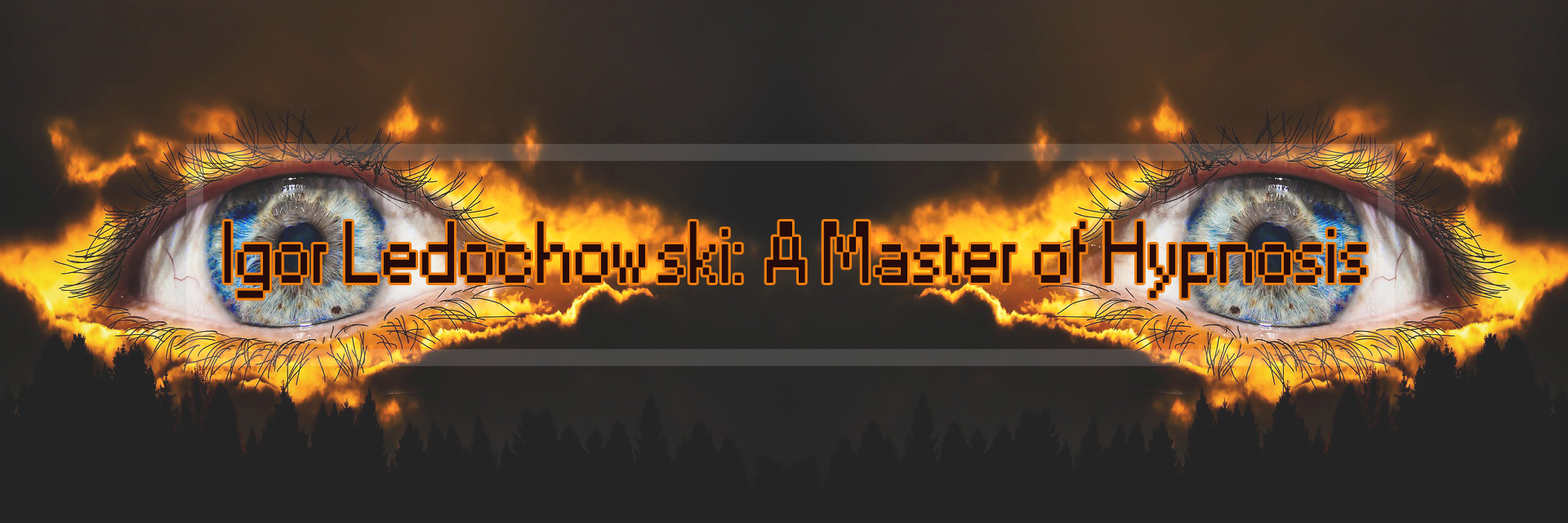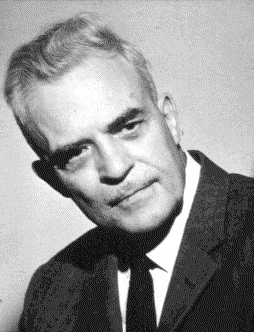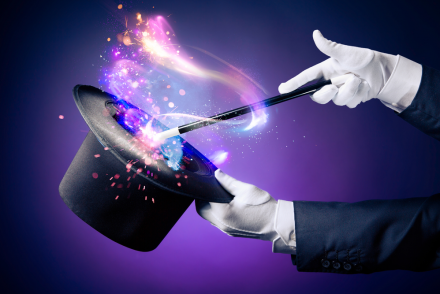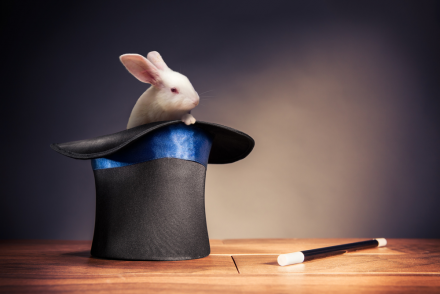
Igor Ledochowski: A Master of Hypnosis

Igor Ledochowski is not a magician, but he is someone you may want to learn from and study if you want to become a master magician.
Why?
Igor Ledochowski is a master at the art of conversational hypnosis. And if you want to be a great magician, one of the best things you can learn is how to use hypnosis techniques to help with your presentation skills.
This is not about hypnotizing people into believing they saw a magic trick you did not do, but about cultivating an environment where you can lead your audience to the conclusions you want them to arrive at.
So, who is this Igor Ledochowski anyway?
Igor Ledochowski: A Former Lawyer Turned Hypnotist
Born in 1974 on April Fool’s Day (April 1), Igor Ledochowski was originally from Austria. He went to school at the University of Exeter and graduated with a Bachelor of Laws degree in European Law in 1995. He joined Linklaters, a global law firm, where he became a solicitor.
However, law was not in Ledochowski’s future. The young law associate was very interested in human potential and personal development, including topics such as accelerated learning.
He eventually learned Ericksonian Hypnosis, and quit his job as a lawyer to pursue hypnotism as a career. Igor Ledochowski is a Certified Master Hypnotist and Trainer. He is also an Accredited and Certified NLP Master Practitioner and Trainer, as well as a Certified Success Life Coach and Trainer. (NLP stands for neuro-linguistic programming.)
His teachers and mentors have included renowned NLP expert John La Valle; Richard Bandler, co-creator of neuro-linguistic programming; John Grinder, who created NLP with Bandler, Stephen Gilligan, the developer of Generative Change, and Stephen Brooks, a leader in the field of hypnosis and specifically Ericksonian Hypnosis.
Since quitting the field of law, Ledochowski becomes recognized as one of the top hypnotherapists in the United Kingdom. He teaches master classes in hypnosis at a variety of schools and venues, including the London College of Clinical Hypnosis and the Hypnotherapy Association. As head trainer for NLP & Hypnosis for Easy Stop, he has helped people overcome self-defeating habits such as overeating and smoking.
He also provides consulting for major corporations such as Proctor & Gamble and J. Sainsburys.
He is also an author and released his first book “The Deep Trance Training Manual, Volume 1” in 2003 to much acclaim. Other books he has written include “The Secret Art of Great Conversation,” “The Power of Conversational Hypnosis,” and “Money in Your Mind.”
What is Ericksonian Hypnosis?
The field of Ericksonian Hypnosis informs everything that Igor Ledochowski does as a master hypnotist.

Dr. Milton Erickson was one of the founding fathers of modern psychiatry, and he is known as the “father of hypnotherapy.” His specific brand of hypnosis is all about indirect suggestion instead of direct suggestion.
The idea is that indirect suggestion is a much better way to influence a client’s beliefs and behavior because it is less likely to meet with conscious resistance. In using indirect suggestion, you are speaking to the subconscious or unconscious mind, bypassing the conscious thinking processes.
What is the difference between direct and indirect hypnosis? It is largely a matter of style, but style is everything when it comes to hypnosis.
In direct hypnosis, the hypnotherapist would perhaps say something short and to the point, like a military command: “you are getting sleepy.”
In indirect hypnosis, the Ericksonian hypnotherapist would say something a lot more indirect and less commanding, such as: “you may wonder whether you feel like it is time to relax and sleep now.”
Direct hypnosis has many applications, including self-hypnosis, which is what it is perhaps best for. Many modern hypnotherapists use direct hypnosis safely and effectively, so it is certainly not a discredited form of hypnosis by any means.
However, indirect hypnosis is often more effective, especially with people who might be otherwise resistant to direct hypnosis.
And, indirect hypnosis is a critical part of conversational hypnosis, which Ledochowski has been a key leader and developer of.
What is Conversational Hypnosis?
Igor Ledochowski took the principles of Ericksonian hypnosis and helped develop and refine a related field, “conversational hypnosis.”
What is conversational hypnosis? The art of conversational hypnosis is exactly like the name suggests. It is hypnosis that happens in a conversation, instead of in a hierarchical therapist vs. client scenario.

In conversational hypnosis, you use indirect suggestions, as well as questions and other verbal techniques, to put your “subject” into a light trance. As you can see, using direct hypnosis would not be appropriate in a conversation.
Conversational Hypnosis vs. Covert Hypnosis
The term “covert hypnosis” is often used interchangeably with conversational hypnosis. However, the two are not entirely the same. Covert or secret hypnosis is hypnosis that is done on the sly, without the knowledge of the hypnosis subject. However, conversational hypnosis is often done with the foreknowledge of the hypnosis subject.
You can see many examples of conversational hypnosis that are not covert in many YouTube videos. The video “Hypnotherapy Demonstration Using Mind Bending Language with Igor Ledochowski” shows a demonstration he did in front of a live audience.
His subject, a blonde woman, knew who he was and was an eager participant in the conversational hypnosis. If you did not know that he was actively hypnotizing the woman, you might just think he was engaging in everyday conversation.
He uses a variety of hypnosis tools and techniques in this video, many of which were recognized by YouTube commenters. Some of these hypnosis techniques include confusion patterns, recognition signals, hypnotic triggers, and post-hypnotic suggestions.
Conversational hypnosis is in many ways an art form, and Igor Ledochowski is a master at it.
Another term used for conversational and covert hypnosis is “sleight of mouth.” This is an oblique reference to how the skill is in many ways similar to the skills magicians use to mesmerize audiences in magic shows.
Conversational hypnosis has a lot of applications in life, provided it is used ethically. Could you use conversational hypnosis to get someone to give you a million dollars? Perhaps, but would that be ethical?
For serious magicians, the purpose of learning conversational hypnosis is clear: It helps to guide and lead an audience member, especially during mentalist magic acts.
Igor Ledochowski’s Tips and Tricks on Conversational Hypnosis
Ledochowski is an acknowledged expert in the field of conversational hypnosis and has shared many ideas and tips on conversational and covert hypnosis.
Why Softening Language is a Useful Tool for Hypnotherapists
Indirect hypnosis is especially helpful in conversational settings because the language is less forceful and direct. This makes it more palatable to the hypnosis subject.
“The point is to take the harshness out of your conversations,” Ledochowski has explained. “It’s to soften the blow so people don’t feel that they’re being dictated to or told what to do because most people tend not to like that.”
Furthermore, softer language helps reduce the risk when hypnotizing people. If, for example, you give someone a direct suggestion and they do not follow it, then you will lose confidence and they will lose confidence in you.
If an indirect suggestion is provided, and it is passed over, that confidence issue won’t come up, according to Ledochowski.
Using Hypnotic Power Words and Phrases Increases Effectiveness
Power words in hypnosis are common words that help link together ideas and make them stronger in the subconscious mind of the subject. Ledochowski has explained that these words work because they tap into other feelings.
For example, the word "because" links ideas with a feeling of “motivation.” It is about giving people a strong reason to do something.
Understanding these simple principles can be extremely helpful in working with a subject and making progress with them.
How Magicians Can Benefit from Igor Ledochowski’s Teachings
Igor Ledochowski’s techniques in conversational hypnosis and “sleight of mouth” can be extremely helpful for magicians who want more control over an audience. If you do a search on his name on YouTube, you will find many videos of him in action, all free.
Take some time to study these videos to see what he is doing with his subjects. Notice his body language, where he positions himself in relation to the hypnosis subject, and what he says and how he says it.
Notice that he seems relaxed during these sessions. He does not strive to perform but acts naturally.
This can be a great way to present a magic trick and is something that many master magicians such as Eugene Burger have mastered.
Igor Ledochowski: The Expert in Conversational Hypnosis
If you are looking to learn even more, you can probably find many workshops, trainings, books, and learning products with Igor Ledochowski. Consider them a part of your magician training.


